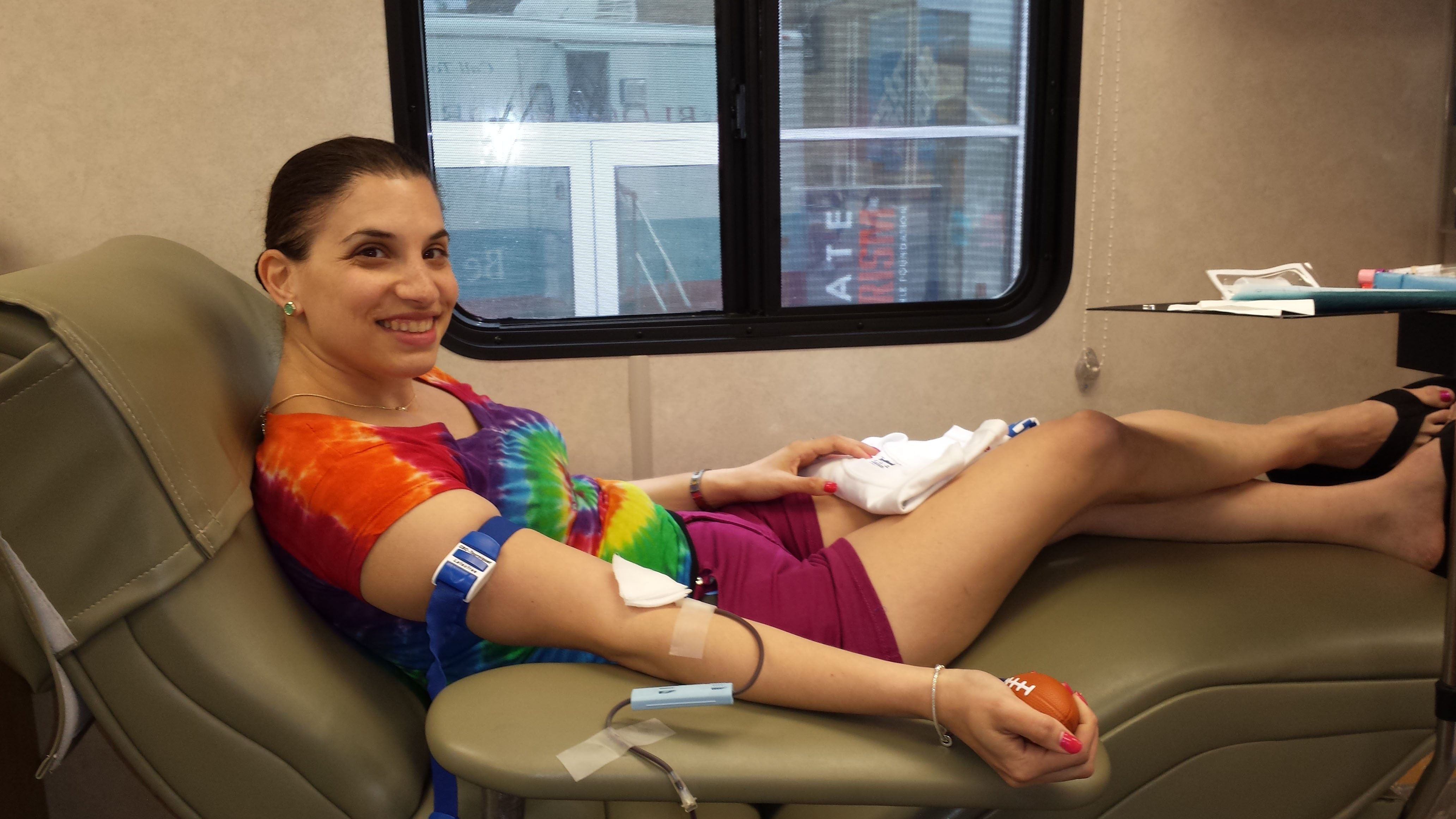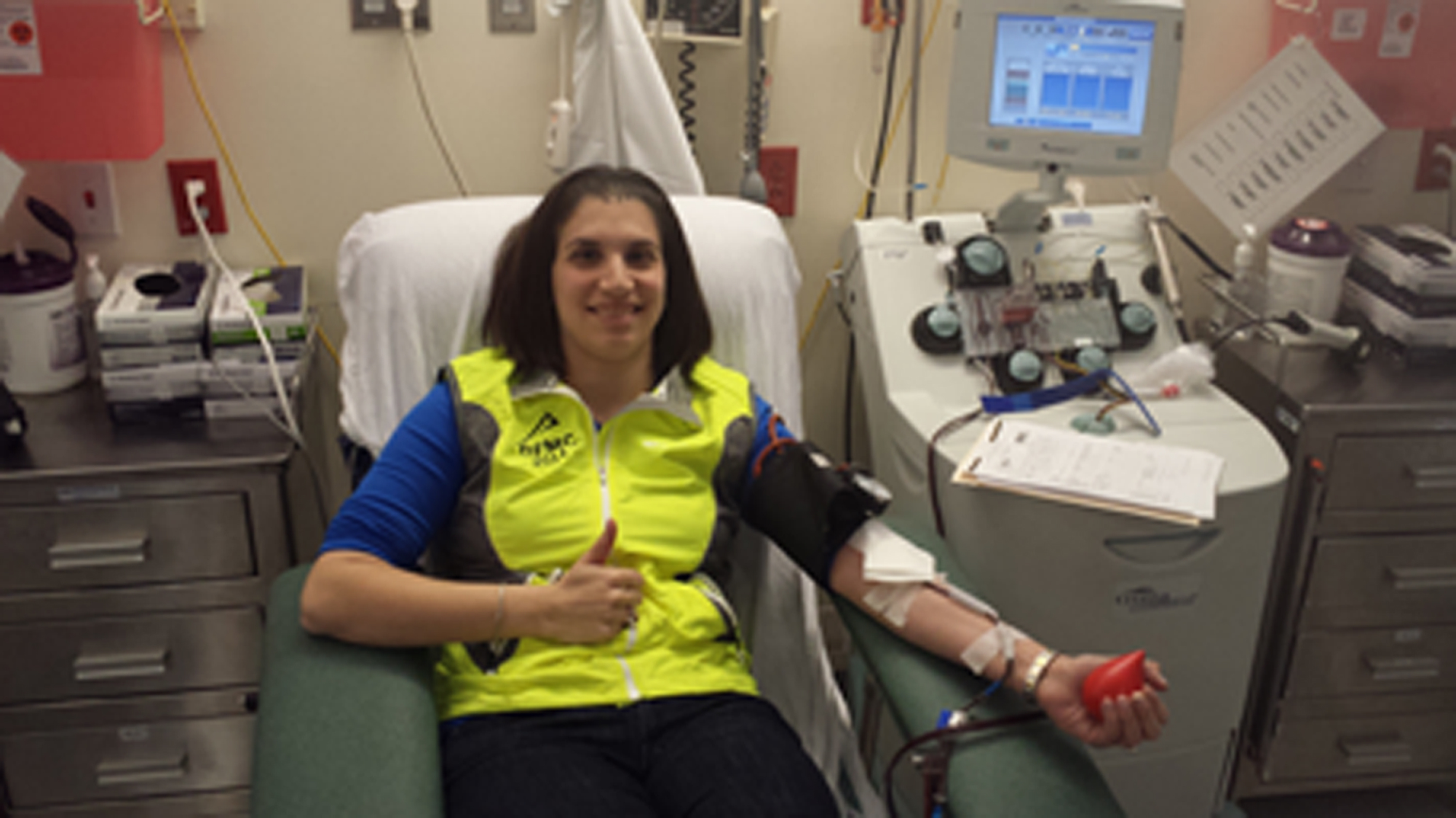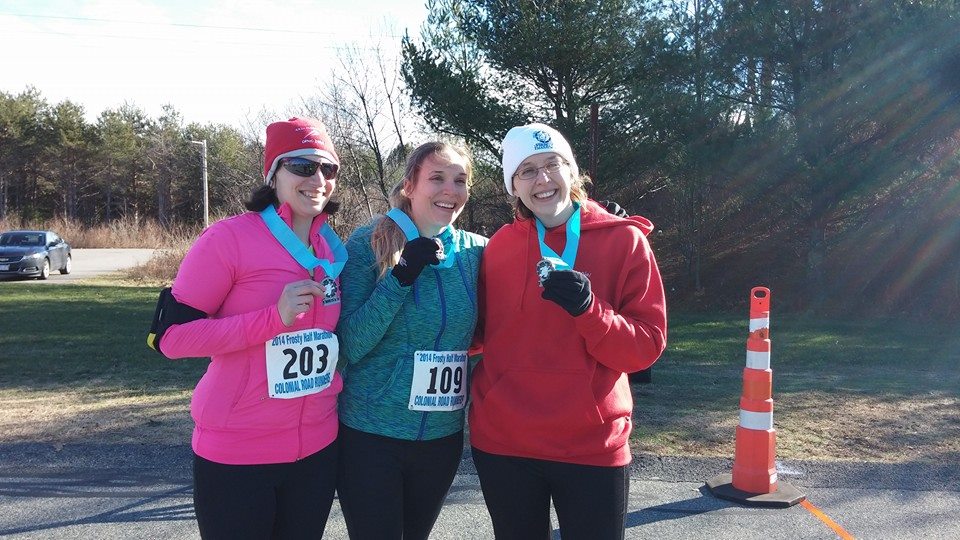Today is Fit Friday. I went to the gym and used the arc trainer for an hour and a half so I am prepped for my first training run with DFMC tomorrow morning. I plan on running a short distance since I ran a half marathon last weekend and the most amount of mileage people at the group run are running tomorrow are 10 miles.
On Monday, I am heading to donate platelets at the Kraft Family Blood Donor center at the Dana-Farber Cancer Institute. Today’s topic is related to donating blood. How does donating blood help people with cancer?
Blood cannot be made in a laboratory, so the blood or blood cells used in transfusions to help people with cancer must come from a donor.
A person who is healthy, weighs at least 110 pounds, and is at least 17 years old is usually able to become a blood donor.
Donating one pint of blood usually takes 10 minutes and is safe and simple.
Donating platelets is a two-hour process, and it provides as many of these blood-clotting cells as 12 to 18 whole blood donations.
More than 44,000 blood donations are needed every day. Many of these donations are given as blood transfusions to people with cancer. A blood transfusion is a procedure in which blood or a blood component is transferred from one individual (donor) to another (recipient). Cancer treatments, such as surgery, chemotherapy, and bone marrow transplantation, or the cancer itself may cause the need for a transfusion. A person may choose to donate whole blood or specific parts of the blood, such as platelets or red blood cells.
Why blood is needed
Blood carries oxygen and nutrients to every part of the body and takes away waste products. Unlike some other materials made by the body, blood cannot be made in a laboratory; it must come from a donor. The parts of the blood that are most commonly transfused are platelets, red blood cells, plasma, and cryoprecipitate.
Platelets
Platelets are blood cells critical to blood clotting, which is the process that stops bleeding. When cancer and/or cancer treatment causes a person’s platelet level to fall too low, a transfusion may be given to reduce the risk of serious or life-threatening bleeding.
Red blood cells
Red blood cells contain hemoglobin, an iron-rich protein that carries oxygen throughout the body to vital organs and tissues. They are used to treat anemia (a low number of red blood cells), which can be caused by cancer and/or cancer treatment.
Plasma
Plasma is the pale yellow liquid portion of the blood in which cells travel. It carries proteins that help control bleeding and antibodies that help fight infection. A plasma transfusion may be needed if a person has experienced severe bleeding.
Cryoprecipitate
Cryoprecipitate is the part of plasma that separates as frozen plasma slowly thaws. It contains a higher concentration of blood clotting proteins than regular plasma. This blood component is not often needed by patients with cancer.
Most donors give whole blood, which is then separated into the various components.
Who can donate blood
Donors need to be healthy, weigh at least 110 pounds, and be at least 17 years old. (Some states allow 16-year-olds to donate blood with a parent’s consent.) Other factors that may affect a person’s eligibility to become a blood donor include:
Medications
Most medications do not pose a problem. However, people taking certain medications, such as blood thinners, must wait for a specified time after taking their last dose before they are able to donate blood.
A history of cancer
Most cancer survivors can donate blood if they have been cancer-free for 12 months. (People who had a low-risk skin cancer removed do not need to wait.) People with a history of blood cancer, such as leukemia or lymphoma, cannot donate.
A history of other diseases or conditions
Certain diseases, such as HIV/AIDS and hepatitis, make a person ineligible to donate blood. Other chronic health conditions may make donation unsafe for individuals.
Travel
A person who has traveled in an area where malaria is common should wait 12 months to donate.
Pregnancy
Pregnant women cannot donate blood and must wait six weeks after giving birth.
Donating blood
Donating blood is safe and simple. Before giving blood, donors should drink plenty of liquids, eat foods rich in iron, and avoid fatty foods. Upon arrival at the donation center, donors should be prepared to provide identification and a short medical history, including current medications. Donors then have a mini-physical, which includes taking their temperature, pulse, and blood pressure and testing their hemoglobin levels. In addition, donors complete a questionnaire to determine their eligibility to give blood. All information provided to the blood donation center is confidential.
It only takes about 10 minutes to draw one pint of blood, the usual amount given during donation. Immediately afterward, donors receive a beverage and a snack to help restore fluids and nutrients to the body. For the rest of the day, donors are advised to drink more fluids and limit exercise.
After blood is drawn, it is tested for blood type (A, B, AB, or O) and Rh type (a type of protein on red blood cells; a person is either Rh-positive or Rh-negative). The blood is also screened for any unexpected red blood cell antibodies that may cause problems for a recipient, as well as for diseases that can be spread to recipients.
Healthy donors are able to donate blood every eight weeks.
Donating platelets
One platelet donation can provide as many platelets as 12 to 18 whole blood donations. This is beneficial to patients with cancer who have weakened immune systems because they are not exposed to as many donors. During the donation, blood is drawn from the arm through sterile tubing into a centrifuge, a device that separates platelets from the rest of the blood and then returns the remaining blood to the donor.
This carefully monitored, two-hour process may involve one or both arms, depending on the collection machine. Although donation is easy and painless, some donors experience mild side effects that the donation center staff can help manage, such as tingling sensations, especially around the face and mouth, and feeling chilled. Platelets can be donated every seven days, but most centers limit donations to 24 times per year.
Donors interested in giving platelets should:
Avoid aspirin or products that contain aspirin at least 48 hours before a donation.
Consume extra calcium and fluids before donating.
Avoid heavy lifting or strenuous exercise immediately after donating.
Other blood parts, such as red blood cells and plasma, can also be donated individually.




